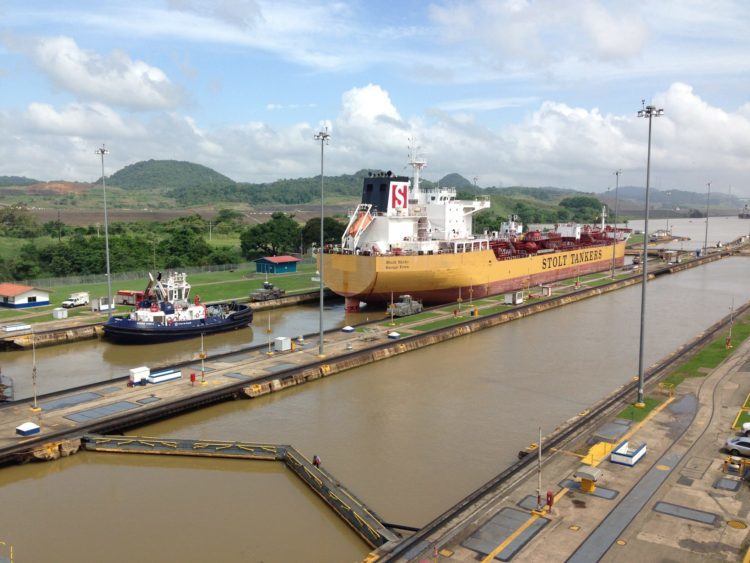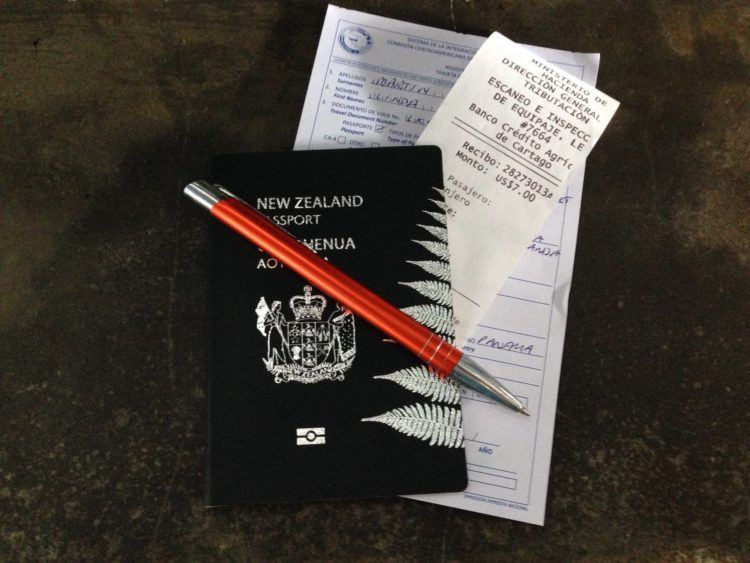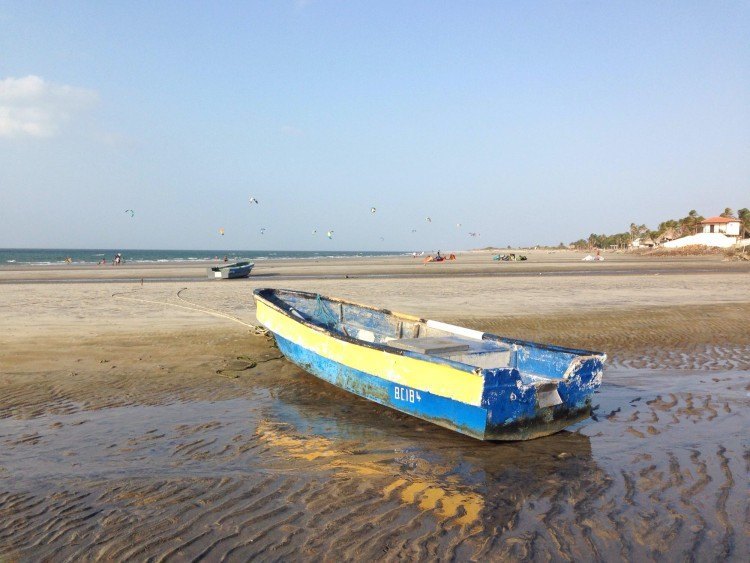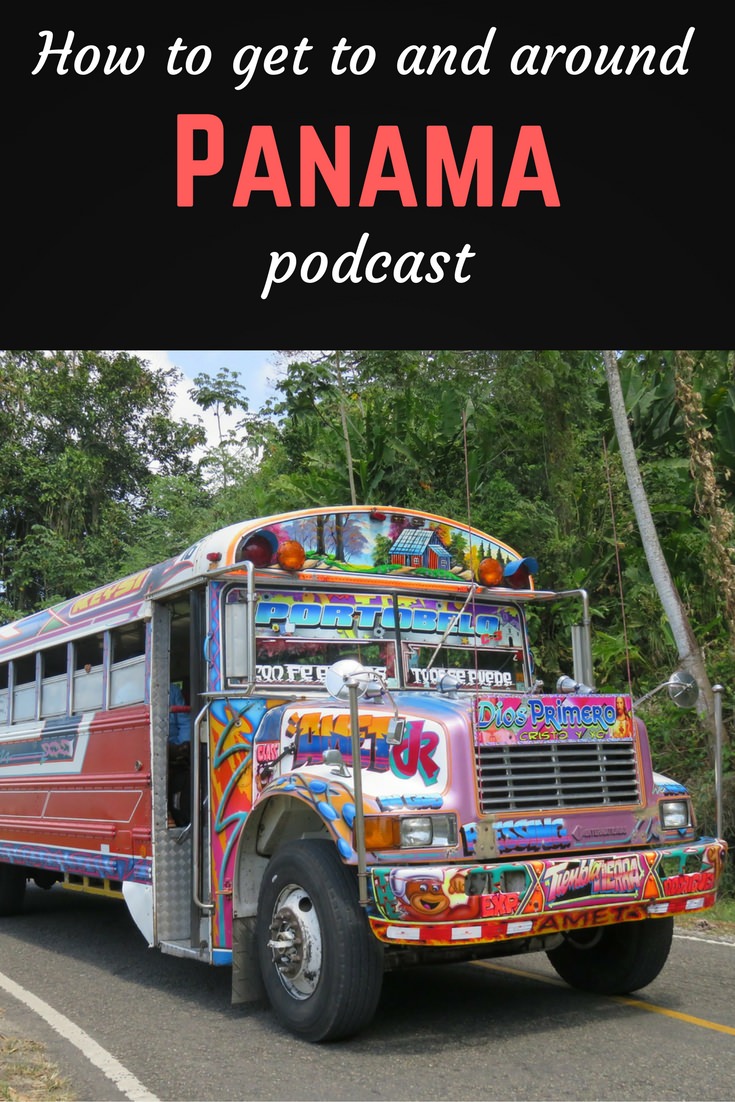Sponsored Listings:
Panama’s known for transport — it’s most well-known feature is the Panama Canal, which saves hundreds of days and millions of dollars in travel time for vehicles as varied as cargo ships, cruise liners, and small pleasure craft.
Getting around Panama is pretty easy and relatively inexpensive — but don’t expect to find any bus timetables online!
To listen, hit play below or find episode 328 in iTunes, Stitcher or Soundcloud:
Getting to Panama
Plane
Plane
There are direct flights from many countries including Colombia, Costa Rica, and the USA, though when travelling from Mexico we found it a lot cheaper to fly into Costa Rica and then travel overland to enter Panama than to fly direct. Arrival taxes are usually included in your ticket, so you won’t have to pay anything at the airport, though you will have to fill in an arrivals form. Check your visa requirements in advance (Citizens of New Zealand and many other countries are allowed 180 days visa-free) so you don’t get caught at the border.
Be aware you might be asked for proof of departure and proof of funds to be allowed to enter Panama. We weren’t, but it’s always worth being over-prepared!
While there are several airports dotted around the country, chances are you’ll fly into Panama City, which boasts THREE airports, of which Tocumen is the largest. It’s 15km from the centre of the city, so if you have the option to fly into Allbrook, go with that one! From Allbrook, you can take a five-minute taxi ride to be at Allbrook mall, the final stop on the metro line.
From Tocumen, you can catch a bus into the city, but you’ll have to ask around for directions to the bus stop — it’s out on the highway and little hard to find. A taxi will set you back at least $30, so if you’re on a budget, the effort is worth it.
Boat
Panama has borders with two countries — Colombia and Costa Rica. There are three land border crossings with Costa Rica, but if you want to travel from Colombia to Panama, you’ll have to fly or go by boat.
Backpacker boats run the route from Cartagena Colombia to Colon, Panama, and take several days to make the journey — they stop off in the San Blas islands for a spot of diving or snorkelling. We looked into them, and found quite mixed reviews — far too much seasickness for our liking! We ultimately chose to fly, but a backpacker boat could be a good option for you.
You could also choose to sail yourself or hop on a cruise that goes through the Panama Canal. Friends of ours just did this, but the cruise didn’t actually stop in Panama — perhaps because of the rather hefty tax that people who arrive by sea have to pay.

Bus: border crossing at Paso Canoas
Of the three border crossings with Costa Rica, Paso Canoas is the most popular — perhaps because it’s on the Pan-American Highway. Crossing the border is pretty easy, though not particularly straightforward.
You can either catch a bus to the border, cross on foot, then catch another bus, or you can travel direct from San Jose direct to David, Santiago, or Panama City. The bus will wait for you as you go through customs, which was great for us as we were arriving at dusk and didn’t know how things worked!
There’s a $7 departure tax to leave Costa Rica, which you can pay at the Ticabus terminal in San Jose if you’re travelling from there. At the border you can pay by cash at the bank stand across the road from the passport office, or by credit card at one of the electronic kiosks in the terminal.

Start by standing in line at Costa Rican customs. You’ll be given a form to fill in, which you then present along with your passport and tax receipt. All going well, the customs officer will stamp your passport and you’ll be allowed to go on to the next step.
Walk down the road towards the big hangar that covers the road, and head towards the middle island. You’ll have to skirt around part of the building, and in the middle of this island you’ll probably find a line of people waiting for their turn to be processed. Check you’re in the right line: “entrada” means “entrance” and “salida” means “exit”. While you’re waiting in line, a person with a black municipio shirt and a bum bag will ask you for a dollar and, when you give it to him or her, will stick a sticker stamp in your passport.
At the window, hand over your passport and hope for the best — you may get asked for proof of departure. I didn’t, but Craig did, so make sure you have your onward tickets to hand.
If you’re not on a direct bus service, walk straight ahead out of the terminals and you’ll be approached by people wanting you to hop on their mini bus — which is probably going to David. Hop on (you pay on the bus) or head down the road a bit to the Transport Panachif office. They sell tickets for the big buses that go direct to Panama City — also great for cities en-route like Santiago.

Get around Panama
Bus
Bus
Your best bet for getting around Panama is by bus. There are three main types of bus: the large coach style, the 20-seater minivan, and sometimes smaller vans known as chivas. The large buses run the main routes, are comfy and show terrible movies, the smaller ones go everywhere else, and the seats just aren’t quite long enough for two people. Their destinations are often painted on to make it easy to know if you’re heading in the right direction. For example, we often take the bus from Santiago to Santa Fe, a trip of about 90 minutes, and all the buses that ply the route have Santiago-Santa Fe painted on their windscreens (or Santa Fe-Santiago, to mix things up a bit). We have to change onto another bus, which is sometimes a tiny vehicle, which runs from Santa Fe to El Alto (this is also painted on) and costs us 25c for the 3km journey. We’ve never worked out the schedule for coming back but luckily people have given us a lift every time!

Car
If you’re going off the beaten track, it’s probably worth having a car. We have access to one here for local trips and it makes life so much easier — we go into Santa Fe for lunch once a week; this would be a challenge if we had to take the chiva each time. Car hire is reasonably priced, and travelling along the Pan-American highway is easy. However, many of the roads are in very bad condition (like the one from Santa Fe to Santiago, unfortunately), which makes driving a challenge. I’d also recommend you avoid driving in Panama City — there don’t seem to be any road rules at all!
Get around Panama City
Instead, travel by metro if it goes where you need to go, and fill in the gaps with bus rides and Uber. We prefer Uber to taxis because Panama City taxis don’t use meters — it’s one of those situations where if you’re a local you just know the rates and if you’re a tourist they may try to rip you off.
Have you been to Panama?
Got any questions about getting to or around Panama? Have you been, or are you going soon? Leave a comment below!
To listen, hit play above or check in iTunes, Stitcher or Soundcloud.
Source: IndieTravelPodcast.com










